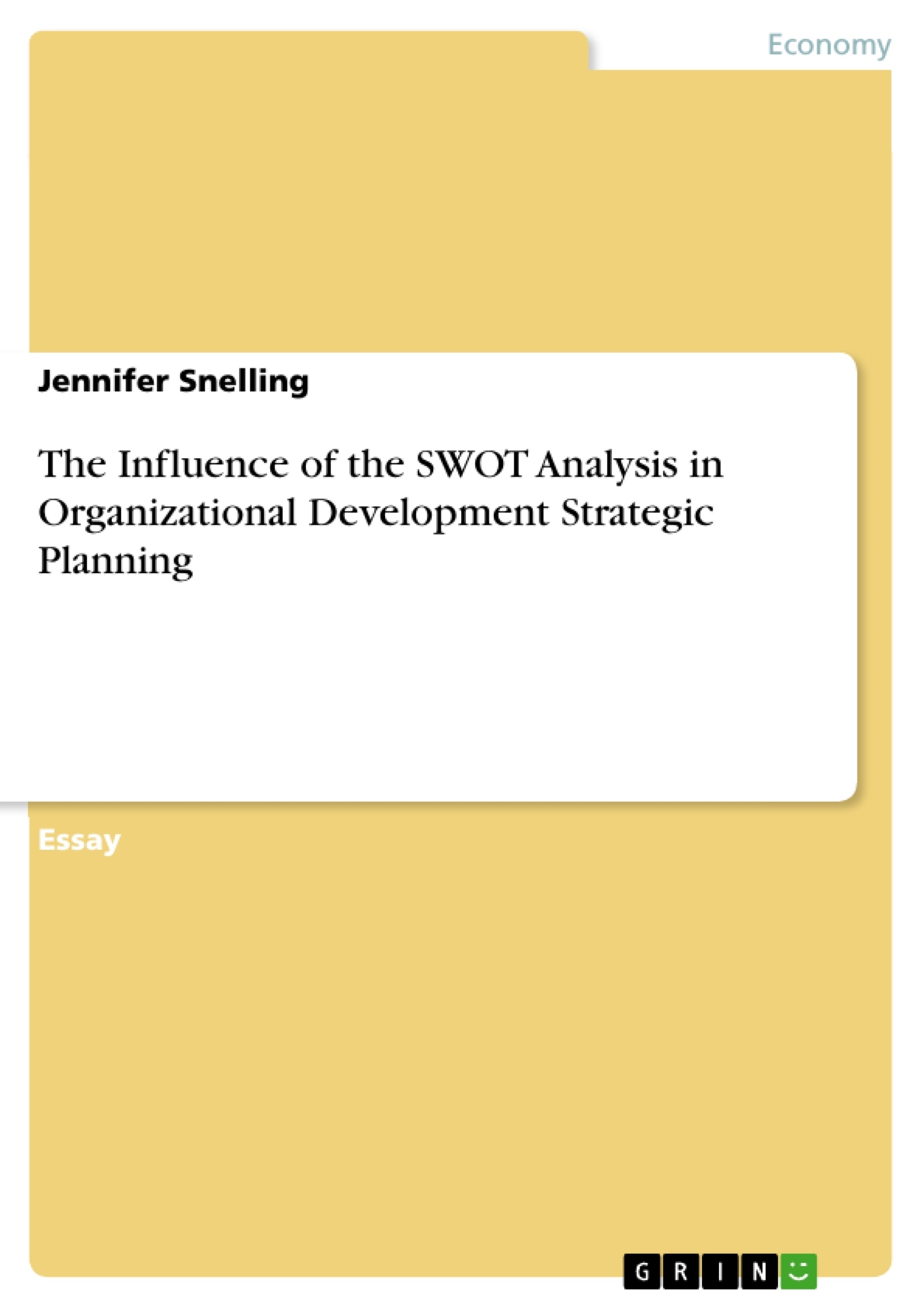In order for strategic planning to effectuate change in an organization, pros and cons must be considered before a consensus must be made. Such an appropriate decision-making procedure creates what could be a predicted outcome of the organization if such determinants are input and taken into action. The SWOT Analysis—Strengths, Weaknesses, Opportunities, and Threats—is a commonly-known strategic planning tool for organizational development with probable causes and effects when implementing a strategy or an initiative (see Bordum, 2010; Panagiotou & van Wijnen, 2005).
Inhaltsverzeichnis (Table of Contents)
- The Influence of the SWOT Analysis in Organizational Development Strategic Planning
- The SWOT Analysis: Diagram and Explanation
- The Results of the SWOT Analysis
Zielsetzung und Themenschwerpunkte (Objectives and Key Themes)
This document aims to examine the influence of the SWOT analysis in organizational development strategic planning, focusing on its role in identifying strengths, weaknesses, opportunities, and threats for a specific organizational development training program.- The evolution of the SWOT analysis and its historical context
- The integration of data and knowledge management in organizational development
- The role of leadership skills in organizational success
- The importance of stakeholder involvement in strategic planning
- The potential impact of weaknesses and threats on organizational development initiatives
Zusammenfassung der Kapitel (Chapter Summaries)
- The Influence of the SWOT Analysis in Organizational Development Strategic Planning: This section provides an overview of the SWOT analysis, highlighting its importance in strategic planning and organizational development. It discusses the history of the SWOT analysis, its evolution from the SOFT analysis, and the importance of considering both positive and negative factors in strategic decision-making.
- The SWOT Analysis: Diagram and Explanation: This section presents a table outlining the strengths, weaknesses, opportunities, and threats associated with a hypothetical organizational development training program. It provides a detailed explanation of each factor, highlighting the potential impact of each on the success of the initiative.
Schlüsselwörter (Keywords)
This document focuses on the SWOT analysis as a tool for organizational development strategic planning. Key concepts explored include strengths, weaknesses, opportunities, threats, stakeholder involvement, leadership skills, and the impact of internal and external factors on organizational success.
Ende der Leseprobe aus 8 Seiten
- nach oben
- Arbeit zitieren
- Jennifer Snelling (Autor:in), 2012, The Influence of the SWOT Analysis in Organizational Development Strategic Planning, München, GRIN Verlag, https://www.grin.com/document/194781
Blick ins Buch



